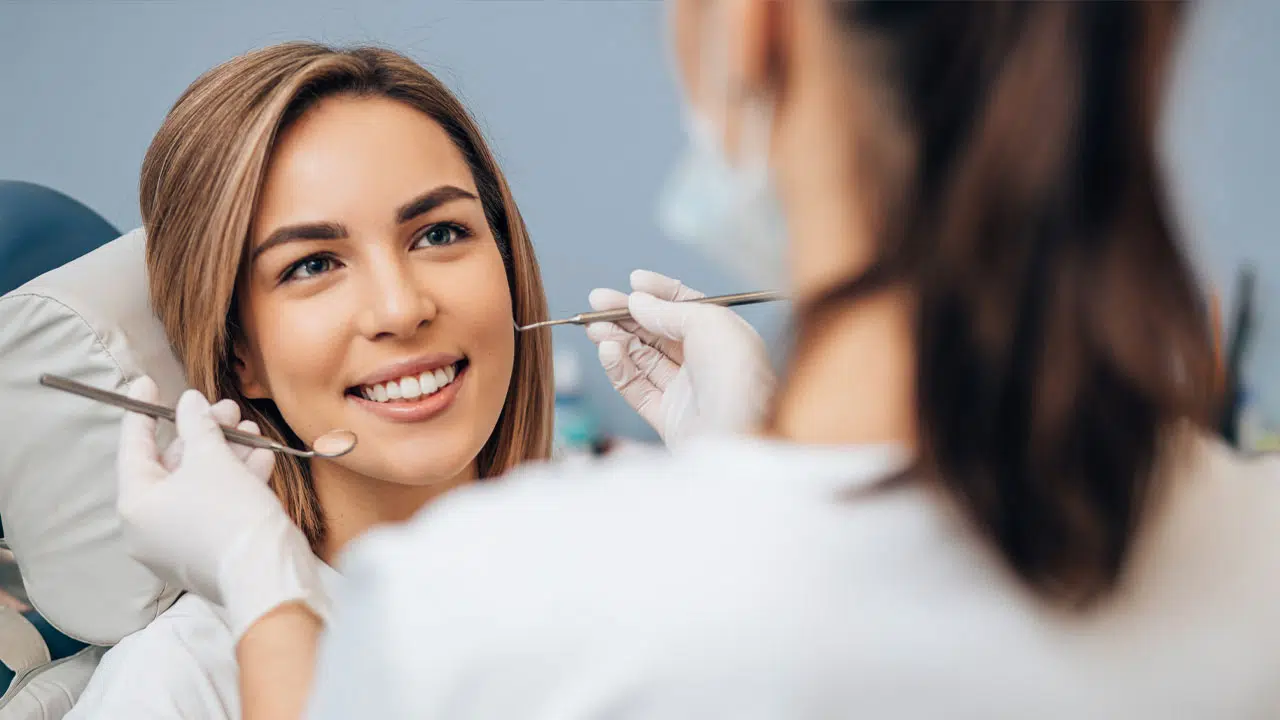
If you are scheduled for a tooth extraction, root canal treatment, dental implant, or other maxillofacial surgery, you may have heard your dentist mention platelet-rich fibrin when discussing your treatment plan. This revolutionary dental technology can facilitate faster healing times and increase the success rate of your procedure. Learn more about how platelet-rich fibrin works and how it is used in dentistry.
What is Platelet Rich Fibrin?
Platelet-rich fibrin (PRF) is a second-generation platelet-rich plasma where leukocytes and autologous platelets are present in a dense matrix made of fibrin, an insoluble protein naturally found in your blood. PRF is used to speed up soft and hard tissue healing.
Essentially, PRF is a blood clot prepared in a developed form that is rich in growth factors and cells. It acts as a natural bioactive barrier while still allowing interaction between the tissues above and below it. These tissue interactions help to promote healing and natural tissue regeneration.
How is PRF Used in Dentistry
In dentistry, PRF is used as a tissue-generation scaffold for dental implants, tooth extraction, and endodontics, a branch of dentistry concerned with the pulp and tissues surrounding the tooth root. Common endodontic procedures that use PRF include treatment for infected root canals or an apicoectomy (root end surgery.)
When using PRF in dentistry, the PRF membrane supports wound healing, as it protects the surgical site. This allows the PRF to promote soft tissue repair, and when combined with bone graft, it can act as a biological connector. This connection draws stem cells, specifically the osteoprogenitor cells, to the graft’s center.
As well as the bone-forming osteoprogenitor cells, platelet-rich fibrin also attracts blood vessel-forming cells. These cells are fundamental for the regeneration of healthy tissue. The PRF healing also prevents undesirable cells from developing during the recovery. PRF is also self-degradable and typically degrades within one to two weeks.
PRF healing was developed to improve the predictability and success of dental procedure outcomes in bone and soft tissue healing and regeneration. These healing outcomes are key objectives, particularly in oral surgery, dental implantology, and periodontology.
How is PRF Obtained?
To access platelet-rich fibrin, a specific amount of blood is quickly drawn into test tubes. It is then immediately centrifuged without the addition of an anticoagulant. This process separates fluids of different densities. Dentists typically use a tabletop centrifuge. The process usually lasts around 3 to 8 minutes at 1,300 revolutions per minute. This process is done in the dentist’s office just before the dental procedure.
Because the PRF comes from the patient’s own body, there is virtually no risk of autoimmune rejection, making the healing treatment widely applicable and easy to use in dentistry.
Is PRF Healing in Dentistry Worth It?
The placement and use of PRF in dental implant sites have been shown to decrease the implant healing time. It has also been shown to decrease the chances of dental implant failure. With this in mind, PRF healing in dentistry is proving to be a greater alternative to sending a patient home who has just had a tooth removal with an unfilled implant site or extraction socket.
As PRF is degradable, the treatment fills the surgical site temporarily, preventing bacteria or unwanted cells from entering the socket to compromise the healing process. It also makes the site much more comfortable for patients, as a less obvious extraction site is felt in the mouth.
Visit Valley Dental Care for Fast Healing With PRF
For more information on this healing procedure, call us at Valley Dental Care. Our dental team is on hand to provide information about the process and how it can benefit your upcoming implant, root canal, or other dental treatment.

